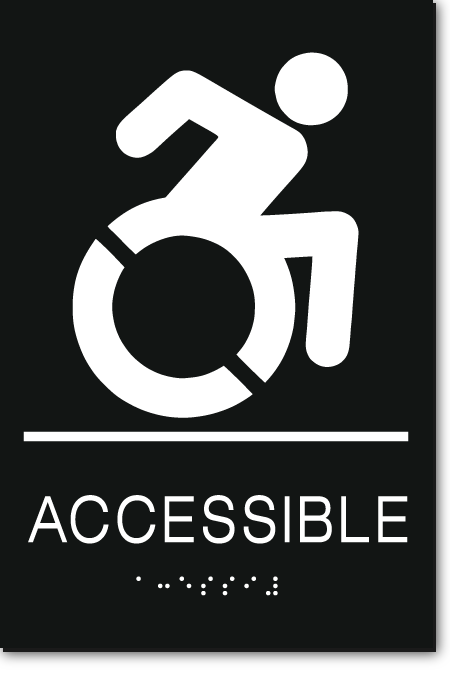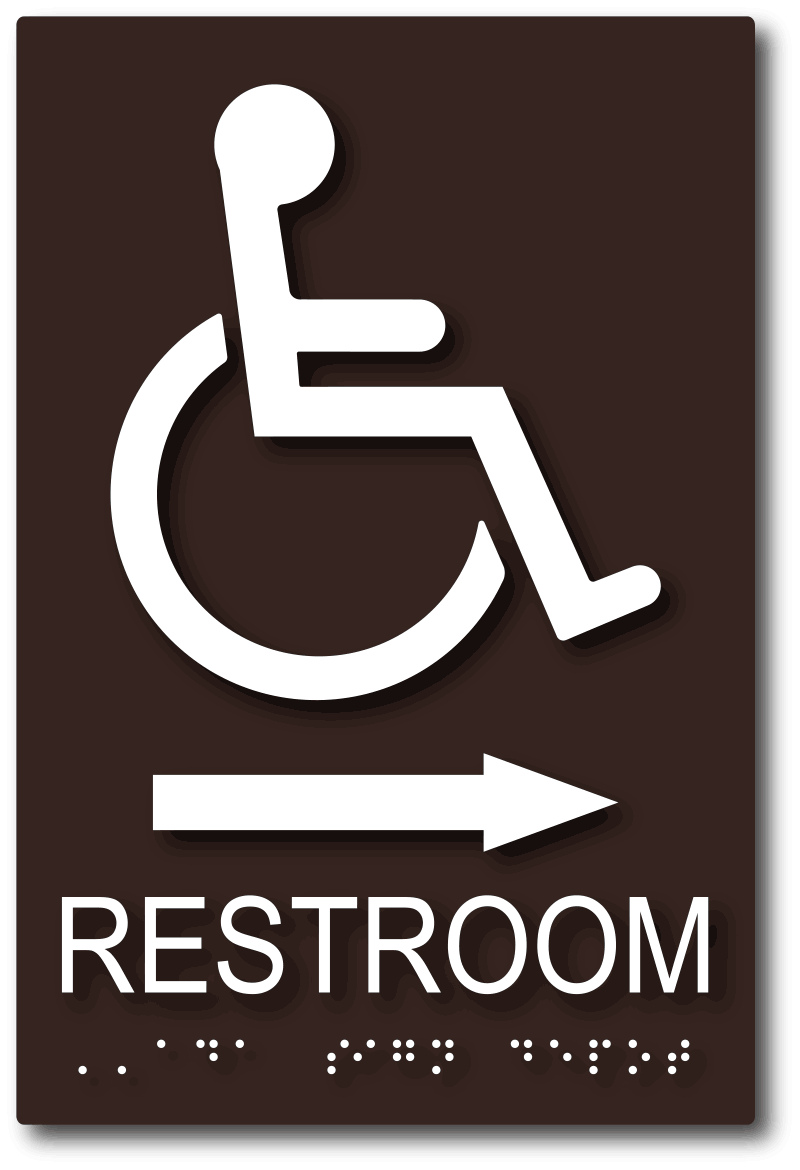Check out the Importance of ADA Signs in Public Spaces
Wiki Article
ADA Signs: Making Sure Access and Conformity in Public Spaces
ADA signs plays a vital function in guaranteeing accessibility and conformity within public spaces, dramatically contributing to an inclusive setting for individuals with disabilities. By adhering to ADA requirements, signage not only helps with navigation however likewise emphasizes an organization's devotion to diversity and equal rights. As we discover the subtleties of ADA signs, from tactile attributes to develop intricacies, it's important to take into consideration just how these components integrate to support the civil liberties of all individuals. What are the typical mistakes organizations deal with in maintaining compliance, and exactly how can future patterns in signage continue to drive ease of access ahead?Value of ADA Signage
In modern-day society, the relevance of ADA signs expands beyond mere compliance with legal requireds to personify a dedication to inclusivity and access for all individuals. These signs are vital in producing environments where individuals with disabilities can navigate public rooms with the very same simplicity and freedom as those without disabilities. By supplying standard and clear details, ADA signs makes sure that everyone can access centers, solutions, and information without barriers.The importance of ADA signage hinges on its ability to improve the high quality of life for individuals with disabilities by promoting equal access. It gets rid of the barriers that may or else prevent their ability to get involved totally in area life. Moreover, these indications offer as visible signs of a company's dedication to variety and equality, mirroring wider societal worths that champion the civil liberties and dignity of all people.
Furthermore, ADA signs plays an important duty in public safety. By leading individuals to departures, toilets, and other necessary centers, it makes certain that all people, no matter of physical capacity, can evacuate safely during emergencies. In recap, ADA signs is not simply a regulatory demand yet an effective tool for cultivating a inclusive and equitable culture.
Crucial Element of Conformity

Placement is essential; signs must be mounted in areas that are obtainable and conveniently visible. Usually, signs must be mounted in between 48 and 60 inches from the ground to ensure availability for both standing and mobility device individuals. Tactile aspects, such as Braille, are important for people with aesthetic disabilities, supplying crucial information in a non-visual style.
High-contrast colors in between the message and background are required to boost readability for individuals with low vision. The ADA mandates details comparison ratios to make sure clarity. Additionally, character dimension is an essential consideration, with minimal height needs determined by the watching distance to guarantee readability from numerous angles.
Style Considerations for Accessibility
Creating available signage requires a meticulous strategy to ensure it satisfies the requirements of all individuals, specifically those with specials needs. This includes taking into consideration various style elements that boost readability and usability. Key factors include the choice of typeface, color comparison, and tactile features. Fonts should be sans-serif, with simple and clear letterforms, to promote simple reading. The dimension of the text is just as essential, with ADA guidelines advising a minimal elevation based upon seeing range to make sure legibility.Contrasting shades in between text and background are essential for exposure, specifically for individuals with visual problems. A high contrast ratio assists identify the message from its history, boosting readability under different lights problems. In addition, responsive elements, such as Braille and raised visit characters, are important for people that are blind or have reduced vision. These elements must be located at a regular elevation and position to make sure simple gain access to and understanding.
In addition, the placement of signs plays a significant role in access. Indicators must be set up in places that are unobstructed and conveniently reachable. Making sure that signage is mounted at suitable elevations and angles makes it possible for all individuals, consisting of those using wheelchairs, to connect with them properly.
Typical Errors to Prevent

Another common error is the inaccurate positioning of signs. ADA standards specify precise height and area requirements to ensure that indicators are obtainable and easily noticeable by all individuals, consisting of those making use of wheelchairs. Neglecting these standards not just hinders availability yet additionally risks non-compliance with legal criteria.
In addition, not enough contrast between message and history is a constant oversight. Ample contrast is essential for readability, especially for people with low vision. Designers occasionally select colors that are visually appealing however lack the essential comparison, rendering the text difficult to discern.
Lastly, some designers fall short to incorporate tactile aspects, such as Braille, which are critical for people who are blind. Omitting these functions not just causes non-compliance with ADA regulations however also limits accessibility for a sector of the populace that counts on responsive information.
Future Trends in Signs
Improvements in modern technology and boosting understanding of inclusivity are forming the future trends in signage design. Digital signage, for instance, is progressing to consist of interactive functions and real-time updates, which can be important in giving dynamic info in public areas.One more arising trend is the utilization of augmented truth (AR) to enhance user experience. AR-enabled signage can overlay digital information onto the physical environment, providing aesthetically damaged people with auditory or haptic feedback. ADA Signs. This technology not just boosts ease of access but additionally produces an engaging experience for all individuals
Sustainability is additionally a substantial factor affecting signs patterns. Environmentally friendly materials and energy-efficient illumination options are being focused on to line up with worldwide environmental goals. Additionally, advancements in materials science are leading to the growth of more weather-resistant and resilient signs.
Verdict
ADA signage plays a vital duty in assuring availability and conformity within public rooms by including tactile aspects, high-contrast colors, and tactical placement. The adherence to ADA criteria not just helps with secure navigation for individuals with impairments but likewise signifies an organization's dedication to variety and inclusivity. By avoiding typical blunders and accepting future fads, public areas can remain to progress these worths, making sure that the rights and dignity of all individuals are valued and maintained.ADA signs plays an indispensable role in guaranteeing access and compliance within public spaces, significantly contributing to a comprehensive environment for individuals with specials needs. As we check out the nuances of ADA signage, from tactile features to design complexities, it's crucial to think about just how these elements coalesce to promote the legal rights of all users.In contemporary society, the importance of ADA signage extends beyond simple conformity with legal mandates to embody a dedication to inclusivity and ease of access for all people. By giving clear and standardized info, ADA signage makes certain that why not check here everybody can access centers, solutions, and information without barriers.
ADA signs plays an important role in assuring ease of access and conformity within public areas by integrating tactile elements, high-contrast colors, and tactical placement. (ADA Signs)
Report this wiki page